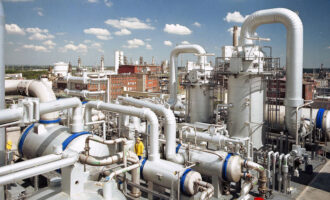
Dimensional Energy: Fixing the carbon cycle
It’s no secret that we need to reduce the flow of greenhouse gases in order to tackle the all-encompassing threat that is global warming. C40 is a network of the world’s megacities committed to addressing climate change. Research unveiled by the organisation in 2015 entitled ‘Deadline 2020,’ advised that cities in Europe, North America and Australia must achieve peak carbon dioxide (CO2) emissions by 2020 to contain the global temperature increase to 1.5%, with all cities following suit within the next decade.
The good news is that 27 of the world’s leading cities, representing 54 million urban citizens, are already pulling their weight. According to a C40 media release on 13 September 2018, these cities achieved peak CO2 in 2012 and have since reduced emissions at an average 2% per year. At the same time, these municipalities averaged 3% annual growth and observed a 1.4% population rise. The cities leading the way on global warming include Barcelona, London, Los Angeles and Sydney.
Influential factors cited in the reversal of CO2 levels include decarbonisation of the electricity grid; optimizing energy use in buildings; cleaner more affordable alternatives to private vehicles; reducing waste and increased recycling rates. Unfortunately, despite the commendable efforts of these 27 cities, we are rapidly approaching the 2020 cut-off, and global emissions levels are still mounting.
Clearly, nature plays a vital role in removing CO2 from the atmosphere. Plants use photosynthesis to convert sunlight, water and CO2 into the nourishment they need to grow. Perhaps an obvious solution to this beleaguering issue is planting more trees to expand the world’s 30% forested area. Unfortunately, absorbing excess greenhouse gases via natural processes is seemingly a futile exercise. According to the World Wildlife Fund (WWF), deforestation continues unabated at a rate of 18.7 million acres of forest per year. The organisation suggests 15% of all greenhouse gas emissions are attributable to deforestation.
For so long the provider of a significant amount of the world’s concentrated energy, fossil carbon extraction and consumption is responsible for more than 6 billion metric tons of CO2 emissions each year. The overarching problem is that these valuable resources are extracted and utilised in a linear process. The value is extricated and then the resource is lost forever. To limit global temperature increases to below calamitous levels, we need alternative measures to fix the carbon cycle. We need to transition towards a circular economy.
If only there was a way to transform the environmentally harmful waste product carbon dioxide back into a useful environmentally-friendly fuel.

Cornell University start-up Dimensional Energy is doing just that. The company has developed a “reverse combustion” process that actively addresses the problem of greenhouse gas emissions. A solar-thermocatalytic technology uses waste carbon dioxide as a feedstock and converts it into syngas or methanol using water and sunlight. The resultant fuel is suitable for use in transportation, energy, heating and cooking.
The technology gained worldwide attention in 2017 by scooping the Grand Prize at the 2017 NASA design contest and a USD20,000 reward. Could this artificial photosynthesis be the end of our climate change desperation? CEO and co-founder of Dimensional Energy, Jason Salfi, believes “a market-driven solution that is cost competitive is the fastest way to develop solutions at a scale for this major crisis that we’re in.”
Dimensional Energy was formed in 2016, with support from NEXUS-NY — a New York business incubator. The company has received funding from the U.S. National Science Foundation in July, and from Shell’s GameChanger program. The GameChanger program was launched in 1996 and assists start-ups with early stage ideas that have the potential to shape the future of energy.
The start-up also recently joined the McGovern Family Center for Venture Development, a life sciences business incubator. The McGovern Center focuses on validating and accelerating the development of client companies to bring the concept to a commercial level.
While Dimensional Energy’s technology is an exciting and potentially life-changing technology, this is not the first foray into the removal of carbon dioxide from the atmosphere on an industrial scale. Billionaire Microsoft founder Bill Gates is a private investor in Canadian clean energy company Carbon Engineering, who in partnership with researchers from Harvard and California energy company Greyrock, have successfully extracted CO2 from the air using direct air capture and used it to produce a mix of carbon-neutral petrol and diesel, a process they call Air to Fuels (A2F).

Like Carbon Engineering, Dimensional Energy holds aspirations of developing an industrial scale carbon dioxide refinery. Salfi believes the company’s artificial photosynthesis could be one of several solutions that will address the global carbon cycle and neutralize climate change.
Cornell professor and another of Dimensional Energy’s founders, David Erickson, believes their unique approach gives the company an advantage over its competitors. “We’ve developed special ways to use the heat and the energy within sunlight to perform the conversion as opposed to relying on other means such as electricity,” he told Rochester Business Journal. Equally importantly, the company believes the conversion of waste CO2 into simple hydrocarbons such as methanol is economically feasible, with the prospect of creating a profitable enterprise.
Still, scalability is a considerable challenge for the organisation in the near term as they continue their journey towards the marketplace. The company has avowed an ambition of producing a commercially viable demonstration reactor in the next three to five years and continues to work with large petrochemical companies on new ways to develop synthetic fuels.
The development of alternative fuel for transportation, in particular, seems like a substantial application. However, the scale of deployment is yet to be determined. Electrification has clearly been earmarked as the new era of transportation, despite barriers such as price, range and charging infrastructure. Policymakers may require further motivation on the merits of alternative fuels for vehicles.
echo '






